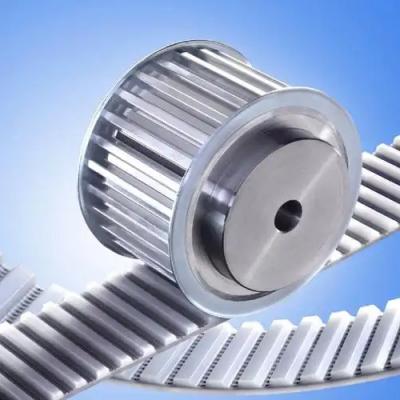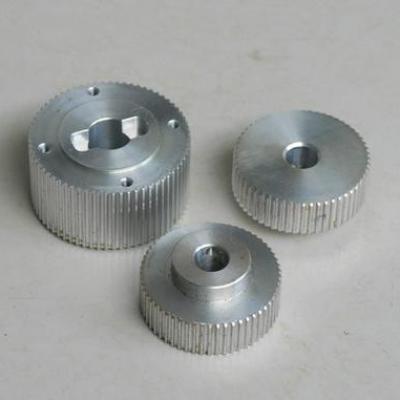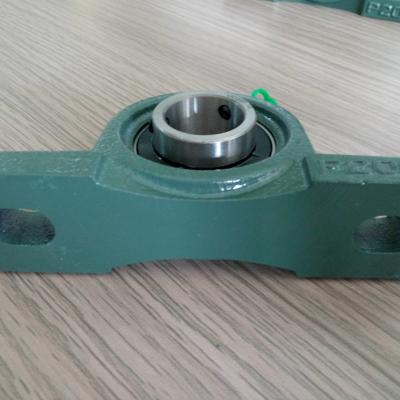The difference pulley and timing pulley
1. Structure1. Pulley: A pulley is a wheel made of metal or plastic and usually consists of two parts: a pulley and a belt. A pulley is a disc-shaped metal or plastic wheel used in belt drive systems. The belt is made of one or more layers of fabric and rubber and is placed on a pulley for transmission.
2. Timing Pulley: The synchronous pulley is usually made of metal or plastic and is a disc-shaped wheel. It is suitable for belt transmission, but unlike the pulley, the synchronous belt is matched with the synchronous belt. Timing belts are made of one or more layers of fabric, rubber and toothed aggregate, and have strong tensile strength and high precision.
2. Working principle
1. Pulley: The working principle of the pulley is to use the belt to generate friction on the surface of the pulley to achieve transmission. The pulley rotates and the power of the rotation is transmitted to the drive shaft through the belt. Due to the stretchability and elasticity of the belt, it can buffer vibration and noise during the transmission process, and is suitable for a large number of transmission types, including the transmission of automobile engines.
2. Synchronous pulley: The synchronous pulley uses a synchronous belt for transmission. The advantages of synchronous belts are high-performance transmission and control accuracy. The synchronous belt has accurate circumferential linear speed, so it can be suitable for high-precision and high-speed transmission, such as machine tools and manufacturing industries.
3. Scope of application
1. Pulleys: Pulleys are widely used in various transmission systems, such as automobiles, heavy equipment, and mechanical transmission systems. The pulley is suitable for low-speed and medium-speed transmission and can withstand certain loads and impacts.
2. Timing pulley: The application range of synchronous pulley is wider than that of pulley, such as transmission in vehicles, air conditioners, power tools, agricultural machinery and national defense. The synchronous pulley has the characteristics of high speed, precision, wear resistance and impact resistance, and can work in harsh working environments such as high load, high speed and high temperature.
【Conclusion】
Both pulleys and synchronous pulleys are essential components in the transmission system, but they have certain differences in structure, working principle, and scope of application. Understanding these differences can help you select the appropriate components in your driveline, thereby improving the efficiency and performance of your drive.





